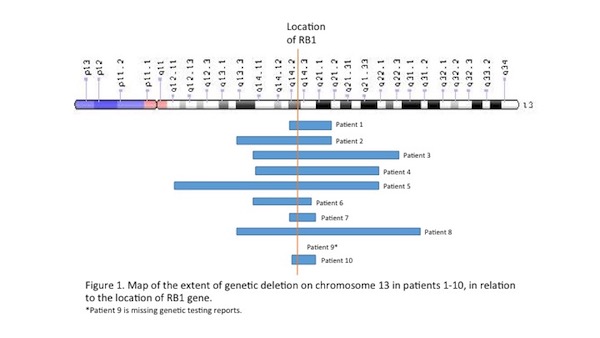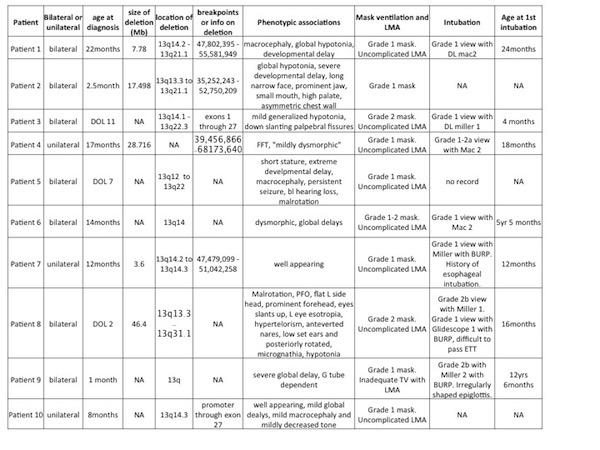AET-20
Airway Challenges in Patients with Retinoblastoma Caused by Chromosome 13q Deletions
1Chai C, 1Christ E, 2Abramson D, 2Afonso A
1New York Presbyterian Hospital- Weill Cornell Medicine, New York, New york, United states; 2Memorial Sloan Kettering Cancer Center, New York, New york, United states
Introduction:
Retinoblastoma is an ocular malignancy caused by inactivation of the RB1 tumor suppressor gene located on the long arm (q) of chromosome 13. A subset of patients with retinoblastoma have various degrees of 13q deletion involving the RB1 gene.
Difficult intubation has been reported in few case reports in this population. We examine the anesthesia records of patients with retinoblastoma caused by 13q deletion at our institution with the hypothesis that these patients have higher incidence of difficult intubation, and with the aim to examine the factors contributing to difficult intubation.
Methods:
Retrospective chart review was performed on retinoblastoma patients who were found to have 13q deletion at our institution. Primary outcome is difficult intubation. Secondary outcome is the phenotypic features that may contribute to difficult intubation. Genetic map of the 13q deletion was shown to demonstrate possible correlation between genetic deletion, phenotypic features, and difficult intubation.
Results:
A cohort of 10 patients with retinoblastoma caused by 13q deletion was included. Two patients had difficult intubation, one of which was confirmed to have a large 13q deletion, while the other did not have record of the extent of the genetic deletion. Eight patients were noted to have dysmorphic features.
Discussion:
Incidence of difficult pediatric intubation has been reported to be 0.3-9%. Difficult intubation was noted in 2 out 10 patients in our study. Although our sample size is small, it is possible that patients with 13q deletion may have more difficulty with intubation.
Patients with retinoblastoma caused by 13q deletions often need frequent anesthetics for exams and interventions, so anesthesiologists should be cognizant of the potential risk of difficult intubation, which may be related to the extent of 13q deletion.
Dysmorphic features are common in this cohort, but most patients with dysmorphic features did not encounter difficult intubation. Therefore, while dysmorphic features may be a clue, they are not always predictive of difficult intubation.
Conclusion:
Retinoblastoma caused by 13q deletion can have dysmorphic features and difficult intubation.
Reference:
Graciano AL, et al. Incidence and associated factors of difficult tracheal intubations in pediatric ICUs: a report from National Emergency Airway Registry for Children: NEAR4KIDS. Intensive Care Med. 2014
Inada T, et al. Anaesthesia in a child with deletion 13q syndrome. Paediatr Anaesth. 1998
Saito T, et al. Difficult tracheal intubation in patients with retinoblastoma caused by 13q deficiency. Jpn J Clin Oncol. 1998
Top













